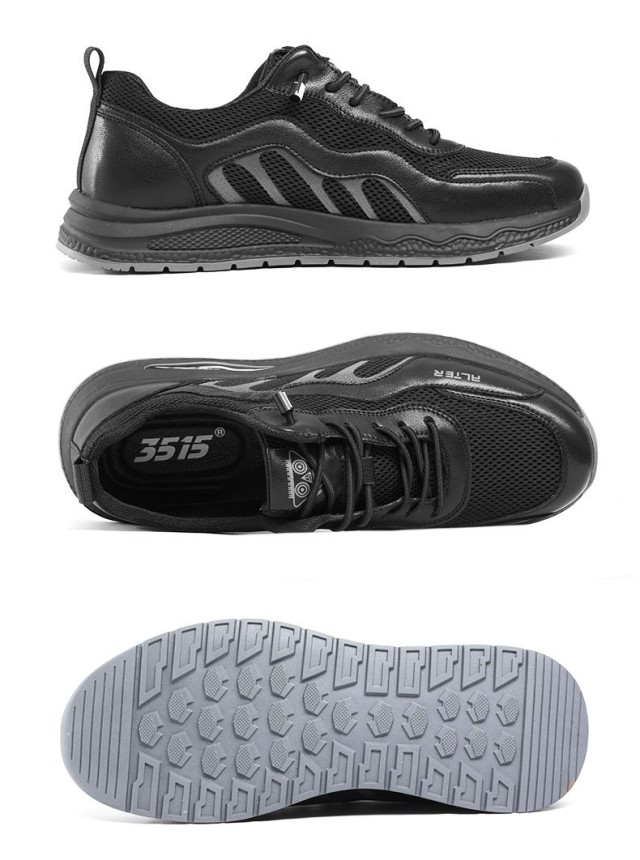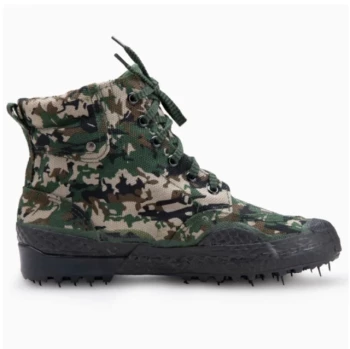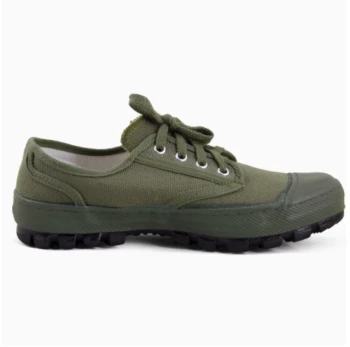Skate shoes aren’t just about style—they’re performance tools. The right choice between vulcanized and cupsole designs can mean the difference between nailing tricks and battling discomfort. This guide breaks down how each type aligns with skating styles, terrain demands, and foot anatomy, backed by pro insights.
Construction and Core Features Explained
Vulcanized Shoes: Precision Meets Flexibility
- Build Process: Thin rubber soles are glued to the upper, wrapped with foxing tape, and heat-treated for durability.
-
Key Traits:
- Lightweight: Enhances boardfeel, mimicking barefoot control.
- Flexible: Ideal for technical tricks (e.g., flip grinds, bowl carving).
- Quick Break-In: Conforms to feet faster than stiff alternatives.
Why it matters: Research shows vulcanized soles excel in "sensitivity-demanding" skating, where foot-to-board communication is critical.
Cupsole Shoes: Support for High-Impact Landings
- Build Process: A single molded rubber unit is attached to the upper, often with added foam cushioning.
-
Key Traits:
- Shock Absorption: Reduces joint stress during stair jumps or gap clears.
- Structured Support: Stabilizes ankles and arches for wide-footed skaters.
- Longevity: Thicker soles resist wear from abrasive surfaces.
Pro insight: Cupsoles dominate street skating where hard landings are frequent, as their design disperses impact forces evenly.
Matching Shoe Type to Skating Style and Terrain
Technical/Street Skaters (Rails, Flip Tricks)
-
Vulcanized Advantage:
- Superior grip and flick responsiveness for precise maneuvers.
- Performs well on smooth concrete or wooden ramps.
Transition/Vert Skaters (Bowls, Halfpipes)
- Hybrid Preference: Some pros mix vulcanized flexibility with cupsole ankle support for pumping stability.
Gap/Stair Specialists
- Cupsole Necessity: Extra cushioning protects heels during multi-story drops.
Terrain Tip: Rough asphalt? Cupsoles outlast vulcanized soles by months due to their abrasion-resistant construction.
Foot Anatomy and Long-Term Durability Considerations
Wide Feet or High Arches
- Cupsoles Win: Contoured arch support and roomier toe boxes prevent cramping.
- Vulcanized Caveat: May feel restrictive; opt for brands with stretchable uppers.
Durability Trade-Offs
- Vulcanized: Wears faster but offers unmatched control—replace every 2–4 months for regular skaters.
- Cupsole: Lasts 6+ months but sacrifices "feel" for protection.
Health Note: Skaters with knee issues benefit from cupsole shock absorption, reducing long-term joint strain.
Pro Skater Insights and Top Model Recommendations
Vulcanized Picks
- For Technical Control: Brands like 3515’s FlexGrip line prioritize thin soles with reinforced flick zones.
- Durability Tweaks: Some models now integrate rubber toe caps to extend lifespan.
Cupsole Standouts
- Impact-Focused: 3515’s ShockVault series uses gradient foam midsoles to soften landings.
- Wide-Fit Solutions: Rounded toe designs accommodate natural foot splay.
Pro Verdict: "I switch to cupsoles for street contests but train in vulcanized—they’re like extensions of my feet," notes X-Games medalist [Anonymous Pro].
Ready to Elevate Your Skate Game?
Whether you prioritize boardfeel or impact protection, 3515’s diverse range delivers both vulcanized and cupsole designs tailored to distributors and brands. Partner with us to equip skaters with performance-optimized footwear—because every trick deserves the right foundation.
Related Products
- Durable Rubber Sole Outdoor Shoes Wholesale & Custom Manufacturing
- Durable Spiked Camouflage Boots Wholesale & Factory Production
- Durable Rubber-Soled Utility Shoes for Wholesale & Custom Brand Manufacturing
- Wholesale Durable Camo Canvas Shoes with High-Traction Rubber Soles
- Durable Canvas Work Shoes with Rubber Lug Sole | Wholesale Manufacturer
Related Articles
- How Vulcanized Shoe Construction Delivers Unmatched Durability and Flexibility
- How Vulcanized Rubber Work Boots Outlast Alternatives – And When to Choose Differently
- How Vulcanized Rubber Engineering Creates Unbeatable Outdoor Boots
- Optimizing Vamp Production for Vulcanized Shoes: Materials, Techniques, and Quality Assurance
- Why Vulcanized Shoes Dominate Durability and Comfort: A Technical and Practical Guide




















